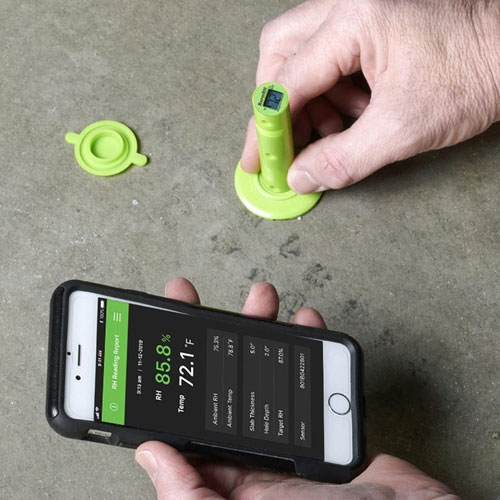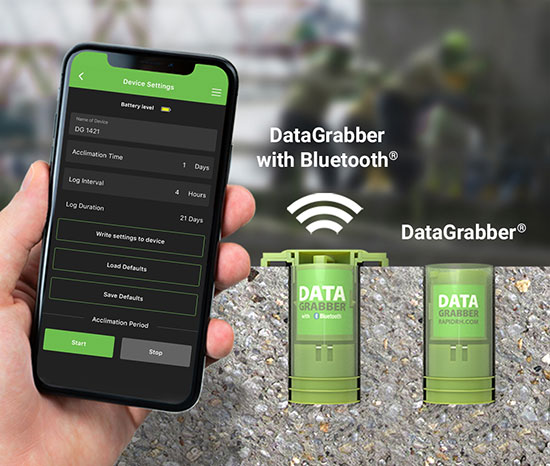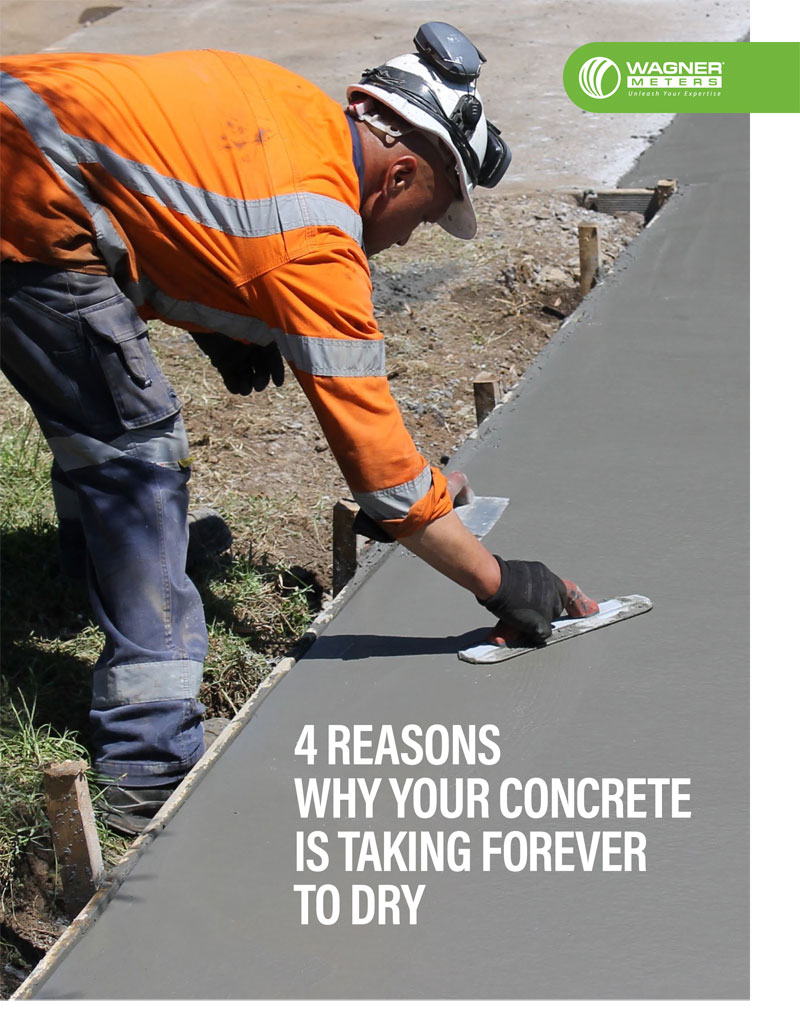New Concrete RH Testing Automation to Make Your Job a Little Easier
Previously published by Tomorrow’s Contract Floors magazine.
Time. When do we ever have enough of it? Where does it go? Does it really just fly away?
And why does it seem to slow down when we’re waiting at the deli counter?
Time certainly never seems to cooperate with a project timeline. The priority, of course, is using first-rate tools to get the job done right. But how awesome would it be if the best tool for the job was also the most efficient?
That’s right. A new relative humidity (RH) test sensor helps automate the data collection when testing the moisture condition of concrete.
RH Testing Is Your Best Tool to Measure Moisture in Concrete
 We know that using an in situ RH sensor is the most reliable and accurate choice to determine the moisture condition of your concrete subfloor because the science tells us so.
We know that using an in situ RH sensor is the most reliable and accurate choice to determine the moisture condition of your concrete subfloor because the science tells us so.
Nearly one hundred years ago, the American Concrete Institute scientifically validated the idea that RH impacts the physical properties of concrete. By 1940, the National Bureau of Standards found in its research that the RH within a concrete slab varies. Over the next few decades, researchers continued to refine and validate the RH test method as the most accurate mode for measuring concrete’s moisture condition.
ASTM F2170 (Standard Test Method for Determining Relative Humidity in Concrete Floor Slabs Using in situ Probes) was based on research out of the Technical University of Lund in Sweden in the 1990s. These researchers were able to lock down the proper depth at which to place an in situ RH probe within the concrete to get an accurate reading that correlates to how much moisture will remain in the concrete subfloor once it’s covered.
And that’s what you really want to know, right? Will the flooring I install over this concrete subfloor stay looking sharp or will it suffer moisture-related damage because the subfloor’s moisture condition was inappropriate?
As Senior Principal Scientist for CTLGroup and noted expert on concrete slab moisture, Howard Kanare conducted tests on concrete slabs over the course of years. These tests corroborated the earlier research showing that RH testing is the best method to give an accurate indicator of the subfloor’s future moisture condition once covered.
Time to Speed RH Testing Up
Alright, so in situ RH testing is your best tool for determining whether that concrete subfloor is ready to be covered. Now the question is how to speed up that process.
Well, ASTM recently sped the process up since the most recent research concluded that RH test holes drilled in concrete were completely equilibrated after 24 hours. ASTM revised the F2170 standard requiring you only wait 24 hours before taking valid moisture condition readings, down from the original 72 hours.
Cutting two days off the timeline is helpful. Now, how about speeding up the RH sensor data collection process?
Wagner Meters’ new Rapid RH® L6 system builds on the company’s well-established line of RH in situ probes by making it even easier and faster to get reliable readings. The system includes a tool called the Total Reader® with Touch-n-Sense™ technology. You just touch this reader to the top of the L6 sensor to get the RH and air temperature from within the concrete. Sensors in the Total Reader itself will capture the air temp and humidity at the same time.
The simple Touch-n-Sense approach lets you power through all your sensors quickly. Every time you take a reading, it gets stored, with a timestamp, on memory chip embedded in the L6 sensor. This is already a game-changer in terms of being able to validate your readings if they get questioned.
Since the L6 system is all about making data collection easy, starter kits come with Smart Logger™ devices. Leave a small device on the job site and it will capture its ambient temperature and humidity conditions periodically. When you’re back on the job site, use the free Smart Logger app on your phone to collect the Smart Logger data via Bluetooth®.
Time to Turbo-Boost How Quickly You Can Collect Moisture Condition Data
 As quickly as the Total Reader with Touch-n-Sense technology lets you move through your L6 sensors, the L6 system gives you even faster options to collect even more data points. The days when you had to travel to the job site to bend over and manually take temp and RH readings are over.
As quickly as the Total Reader with Touch-n-Sense technology lets you move through your L6 sensors, the L6 system gives you even faster options to collect even more data points. The days when you had to travel to the job site to bend over and manually take temp and RH readings are over.
Right now, you probably spend a lot of time in traffic and on the job site to gather manual readings. Each visit takes time away from other projects and your family life. Completely understandable why nobody makes as many visits to each job site as may be most useful to get a consistent picture of how the concrete slab is drying.
The Rapid RH L6 DataGrabber® tool changes all this by automating data collection when you’re not onsite. If you’re a big fan of autopilot, cruise control, and automatic pet feeders, automatic debit, you’ve got a pretty good idea about what the DataGrabber is doing.
Using the free DataMaster™ L6 App, you define the time intervals when you want the L6 sensor to record an RH and temp reading. The L6 stores these readings on its memory chip. That’s right. While you’re off somewhere enjoying your child’s recital or installing probes on another job site, the L6 sensors are automatically capturing and storing data for you. You can then collect days – even weeks – of RH test data during a single visit to the job location. That’s some serious time saved.

Free Download – 4 Reasons Why Your Concrete Is Taking Forever to Dry
You have two DataGrabber options for collecting the data stored in the L6 sensor; one is Bluetooth-enabled and one is not. In both cases, the DataGrabber snaps into the L6 sensor. You’ll use the Total Reader to extract the data stored on the L6 sensor with the smaller DataGrabber module. The Total Reader, using its Bluetooth connectivity, then sends the data to the DataMaster L6 app.
The Bluetooth version of the DataGrabber connects directly to the DataMaster L6 app, so you don’t need to use the Total Reader. Just get the mobile device where you installed the DataMaster L6 app in proximity to an L6 sensor and the data will upload to the app automatically. You can literally walk through the location, getting reams of concrete without having to get down on the floor even once.
Both DataGrabber options help you build a comprehensive data record of the slab’s drying process. And they do it within a fraction of the time you needed to spend in the past collecting far fewer data points. The app helps you visually graph out a job’s data so you can identify inflection points and trends. As an automated data collection system, the L6 and DataGrabber also provide you an easy audit record you can share with anyone who’s questioning readings and or why drying isn’t happening on schedule.
When you automate the concrete RH test data collection and management, you’re minimizing the time you need to take readings and the time you need to spend in discussions with people who aren’t happy with those readings. You just might get back some of your time and your sanity.
Read more about the Rapid RH L6 and DataGrabber system.
Jason has 20+ years’ experience in sales and sales management in a spectrum of industries and has successfully launched a variety of products to the market, including the original Rapid RH® concrete moisture tests. He currently works with Wagner Meters as our Rapid RH® product sales manager.
Related Posts via Taxonomies
Last updated on January 18th, 2022



